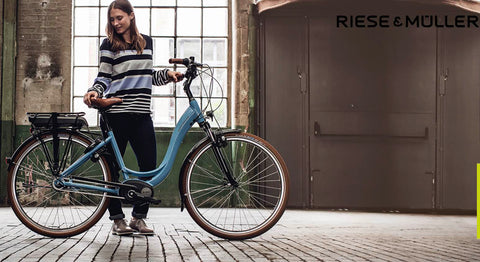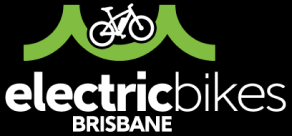Gears are one area that many people get apprehensive about when trying to decide what they need. Rather than the tech talk though let's look at the pros and cons from an ebike user's perspective.
When choosing the gears that you want on your ebike it is really quite simple when you step back from the tech talk:
- Do you like (or are you competent at) changing gears?
- How varied (and steep) is the terrain you plan to ride?
- How much do you value lower maintenance (or top tech)?
Types of Electric Bike Gearing Systems
There are two types of gearing systems commonly used on electric bikes:
- Derailleur gears
- Internal hub gears
With ebikes, because you have the assistance of a motor, the gearing systems used are more about compatibility with the power in the motor so we tend to see less variety in the ebike world. For now... there is a lot of development in this area though, particularly with electronic shifting.
Which type of gearing system is best for you and your electric bike depends on the type of rider you are and the type of riding you like to, or want to, do.
The second part of the equation for you to decide upon is how many gears you want / need. See more on this below. For both types there are lower and higher cost options.
Derailleur Gears

Derailleur gearing systems are the 'normal' gears that most people are used to. They have a chain, cables and multiple sprockets and there is a lever, like a 'trigger' mechanism, that helps you manually shift from sprocket to sprocket ie. gear to gear.
The number of sprockets determines the number of gears. Most ebikes have a single cog (chainring at the front of your system) with gearing ranging from 7-speed up 11-speed. More recently, single cog 12-speed systems have been developed especially for ebikes and many of the e-mountain bikes will features these.
Excellent for sporty riders and steeper terrain

Derailleur gears are an excellent system for sporty riders who want the ability to use their ebike and motor to the full extent of its ability. They allow the motor to operate to its full torque potential which is why you have the higher torque performance ebikes such as electric mountain bikes being equipped with derailleur gears rather than internal gears.
No matter what style of ebike you are interested in though if you are the sort of rider who likes to push the limits then, with the exception of the Enviolo and Rohloff gearing systems (more on these below), the derailleur systems will work best with the high torque motors.
Requires some practice and skill
Derailleur gear require some practice to use, particularly as you need to be pedalling to change gears.
Practice makes perfect.
Another need-to-know with ebikes is that being in the wrong gear when you are climbing hills can really impact how much help your ebike can give you. It's nothing that practice and getting to know your ebike won't solve though.
Requires regular tuning
The other downside is that derailleur gears need regular tuning, more so than internal gears. You will change gears many, many times every time you ride so cables stretch, the chain will wear and knocks and bumps can move it out of alignment. Regular servicing and replacement of worn components will make a big difference to your riding enjoyment.
The better quality the gearing system the more durable the drive train is and therefore the longer it will hold its tune.
Electronic Derailleur Gears
It started with the emergence of electric road bikes onto the scene equipped with top-of-the-range electronic shifting systems and recent developments have made electronic wireless shifting a possibility for e-mountain bikes too.
These are designed for high performance. They allow rapid and precise shifting which offers tremendous advantages for more advanced riding.
The most common systems currently are
- Shimano Di2 eg. Dura Ace, Ultegra designed for road bikes
- SRAM eg. GX Eagle, GX Eagle AXS, GX Eagle Transmission designed for mountain bikes
Internal Hub Gears

Internal hub gears are where the gearing mechanism is completely enclosed in the hub in the rear wheel.
Excellent for urban and allterrain riding - easy and intuitive
Internal hub gears work on the principle of planetary gears. They were first developed in the early 1920's and have consistently offered a reliable, low maintenance shifting system for urban bicycles. Changing your gears is easy and intuitive. Just twist your shift lever.
The real bonus though is that, unlike a derailleur gear which relies on a jumping chain to change, the gear change occurs within the rear wheel hub and does not require you to be pedalling when you change. This is great for urban riding when you are constantly stopping and starting, and is particularly good when carrying children and heavier loads.
More reliable and lower maintenance
The internal hub is a closed system so your gears are protected from moisture and dirt at all times. This makes them more reliable.

The hub unit does not require servicing as regularly as derailleur gears but it is still important to service it. If they go out of alignment and you keep riding then it could become an expensive exercise to repair.
Flat tyres are harder to change
One thing to be aware of is that repairing a flat tyre is not as easy as with derailleur gears. While there are quick repair products eg. Velox that you can carry with you to help you out of trouble, the better thing is to avoid getting a flat tyre in the first place.
If you keep your tyre pressures topped up to the correct pressures you will drastically reduce your risk of getting flats. Furthermore there are some excellent puncture-proof solutions now as well.
Able to be paired with the carbon belt drive

One big advantage of this type of gear is that it allows the use of the modern carbon belt drive instead of a chain. This offers the advantage of even less maintenance and grease and it is lightweight and especially quiet.
Internal gears to handle high torque motors
The complication with electric bikes and internal hub gears is that the extra torque generated by the motor can make it difficult to shift while pedalling, particularly if going uphill. At the value end of the market internal gears are generally paired with the lower torque motors.
With the increasing popularity of the electric bike as an urban mode of transport though manufacturers have invested significant R&D into developing gearing systems that can handle stronger motors.
Because these systems feature on the premium ebike brands it is not uncommon to see the gearing systems paired with the carbon belt drive. This combination creates the lowest maintenance possible, on some of the best performing ebikes available.
Enviolo internal gears

The Enviolo internal gearing systems was developed specifically to provide an internal gear solution to handle high torque electric bike motors such as the Bosch Performance and Performance CX systems.
Now riders who prefer the advantages of internal gears have the option of enjoying riding steeper terrain - perfect in Brisbane! There is a whole heap of pretty amazing technology that makes these gearing systems quite special but obviously this comes at a higher price than standard internal gearing systems.
Rohloff E-14 Internal Gears - Best in Class

Electronic shifting is the next wave in gearing systems but developments have largely focused on the road bike market. Except for Rohloff. The Rohloff E-14 with its SpeedHub is the best gearing system on offer. It is a highly sophisticated auto shift system that boasts the largest range of gears (14 in total) possible on an ebike and a 526% gear ratio. It also offers the fastest gear shifting on the market.
Multi-shift mode simultaneously shifts 3 gears in a single sequence, while the auto-downshift function automatically returns the gear to your individually selected starting gear when the bike comes to a standstill. Very cool!
Choosing Which Gearing System
We have covered the most common systems you will see on ebikes. Which one is the best one fo ryou?
As a rule of thumb, the more gears you have the more precise you can be with ensuring you are in the right gear to maximise your motor for climbing. Also, the wider the spread of gears you have at your disposal offers you greater range of high and low gears for varied terrain.
Let's come back to the three questions to help you narrow down what you want / need:
- Do you like (or are you competent at) changing gears?
- How varied (and steep) is the terrain you plan to ride?
- How much do you value lower maintenance?
If you haven't made up your mind already on what you think suits you best then we will be happy to help. That's what we are here for :)
Curious About Belt Drive EBikes?
See "What is a Belt Drive and Is It Worth the Investment?"
Back to About EBikes




